Adapting to Organizational Change: Hindustan Unilever Research Centre
Faculty Contributor: Abhoy K. Ojha, Professor
Student Contributors: Ashwin Iyer, Caren Rodrigues, Lakshminarayan Swaminathan, Rohith S. and Lakshmi Thulasidas
In 2005, Unilever decided to leverage its global reach effectively and transformed its organizational structure from a multi-domestic organization to a global matrix structure. This article describes the organizational and human resource policy changes that happened in Hindustan Unilever (HUL) in general and the Hindustan Unilever Research Centre (HURC), Bangalore in particular. The research centre was required to adapt itself to the new global outlook and was expected to contribute significantly to the global Research and Development (R&D) department. The challenges thus faced are also highlighted subsequently.
The “Power of One” policy led to the transformation of Unilever from a multi-domestic organization to a global matrix structure. The change of name of the Indian division from Hindustan Lever Limited (HLL) to Hindustan Unilever (HUL) was a part of this policy. The policy led to geographical integration and product strategies and marketing were now managed with a global perspective. In 2008, with the same “Power of One” policy in mind and to increase its efficiency and focus on R&D, Unilever combined its three global R&D operations1 (Foods R&D, Home and Personal Care R&D and Corporate Research) into one Unilever R&D organization. Research was now conducted at six sites, and one of these Research sites is located at Whitefield, Bangalore2,3 . Subsequently, the centre in particular, faced certain challenges in implementing the global “Power of One” policy and revised them to suit the local conditions.
Organizational Design of Hindustan Unilever Research Centre (HURC), Bangalore
The Hindustan Unilever Research Centre in Whitefield, Bangalore is a large industrial private-sector research laboratory in India. The research domains at Unilever Research Bangalore include Skin & Hair, Water, Laundry and Foods, and possess expertise in the areas of Microbiology, Toxicology and Polymer science4. The formal research objective of HURC specifies three components:
- Apply new technology, where appropriate, to the development of products and processes.
- Ensure that existing products are produced and plants operated in the most efficient and economic manner.
- Keep the Unilever Group of companies up-to-date with the latest advances in applied sciences and technologies.
Given the “Policy of One”, integration of research across Unilever’s research centres is also fundamental to the organization’s mission. The organization was thus designed to be able to achieve the above objectives.
Organizational Design
The Research Function at HUL is expressed as a combination of three main roles as given in Exhibit 1.
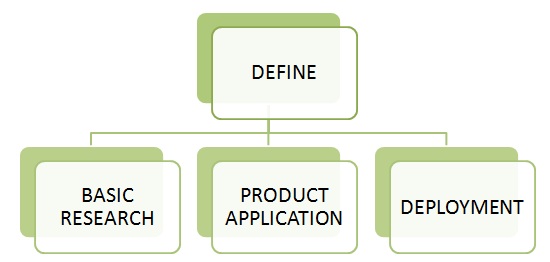 Exhibit 1: Classification of the Research function at HURC
Exhibit 1: Classification of the Research function at HURC
The Bangalore Centre is the only centre in India to undertake Basic Research, and one of six global research centers. The Define role established the direction of research work at HURC coordinating Unilever and HUL’s vision with the market conditions. It was also the approving body for research pursued at lower levels. The Basic Research role was focused on generic research. The Product Application role dealt with product development and involved substantial interfacing with other departments within and outside the Research Centre. The Deployment role involved the highest interface with front-end departments, as it deals with product deployment in the market.
The natural consequence of the above delineation of roles was the development of the Matrix Structure at HURC. Originally, a strong Project or Functional area matrix structure was followed. Interdisciplinary teams would work together on projects in one of the four functional research groups mentioned above. Disciplinary Area managers assigned resources as required, but the reporting mechanisms were biased towards the projects, as shown in Exhibit 2.
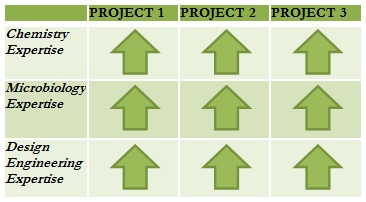 Exhibit 2: Project Area Matrix structure previously used by HURC
Exhibit 2: Project Area Matrix structure previously used by HURC
This reporting mechanism was unsuccessful as it was not in aligned with HURC’s purpose and role. The power balance promoted a short term focus and “trial and error research.” This mechanism was more suitable for a delivery-oriented model, but out of line with Unilever’s Power of One strategy to benefit from both scale and a market focused collaborative research.
In consonance with the above strategy, HURC made significant changes in the organization structure. Hence, from late 2009 onwards, the reporting mechanisms were changed, with the project manager retaining limited authority to oversee the cross- disciplinary aspects of the project. The Disciplinary-Area managers were responsible for in-depth building of expertise in their respective domains, as illustrated in Exhibit 3.
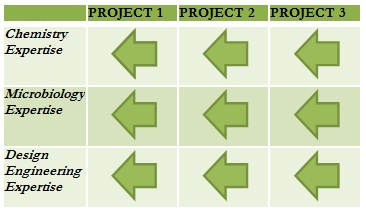 Exhibit 3: The new functional matrix structure adopted by HURC
Exhibit 3: The new functional matrix structure adopted by HURC
HURC did exceptionally well at managing this complex change program to minimize compulsory redundancies. The Centre still enjoyed the synergistic benefit of researchers working in multi-disciplinary teams, but with a difference.
The new Research-oriented model, with its thrust on Basic research had a more long-term focus. By encouraging thesis work for employees and using publications and patents as motivating factors, HURC sought to set high standards for the quality of work and research. The steps to realign and rebalance the R&D organizational structure resulted in increased leverage of its scale, scalable innovations and delivering functional excellence. To achieve the above, HURC made significant changes in their human resource policies as seen subsequently.
Human Resource Policies
HURC had more than 250 highly qualified and skilled individuals, including around 80 holders of PhDs and those with post-Doctoral experience. Several of these researchers had worked or studied in the United States and in Europe. The Centre aimed to create a vibrant environment for these knowledge-workers for them to pursue cutting-edge research work in industry-relevant problems.
To retain these exceptional scientists, HURC implemented a number of policies, which today are characteristic of world-class innovating and research organizations. The Centre boasted of state-of-the art facilities, instruments and pilot plants, comparable to the best in the world. Employees were provided ready access to the relevant books, journals, and e-resources. With a view to providing scientists with the visibility and recognition, their research was regularly published in respected national and international research journals. Patent applications and grants were credited to creators on a regular basis. Apart from the above, the campus was deliberately designed to create an invigorating work environment in the midst of rare flora and fauna. Stringent safety norms were enforced within the campus to convert it into a zero injury zone.
Challenges of Organizational Change
With the shift to the new organizational structure, new human resource policies were also adopted similar to those implemented globally. However, the transition was impeded by the following challenges.
Flexi-Time policy5
Despite proving to be a success elsewhere, flexi-time failed miserably in the HURC and was retracted.
As part of the “Power of One” strategy, the practice of flexi-time was implemented globally, across all Unilever Research Centers, permitting flexibility of working hours, provided each employee spends a specified amount of time per day, at work. Flexible work hours meant that employees could avoid rush-hour traffic thereby reducing travel time, which in turn would reduce fatigue and increase productivity. It also meant that scientists could choose to work during their most productive hours and thereby add greater value to the organization and promote a healthier work-life balance.
However, despite proving to be a success elsewhere, flexi-time failed miserably in the HURC and was retracted a few months ago. The level of output in terms of scientific research were far from adequate because such knowledge intensive work necessitated interactions among the scientists as well as the usage of the laboratory equipments and infrastructure. Besides, flexi-time proved to be an administrative nightmare in terms of coordination of work. This system also provided an opportunity for unmotivated employees to slack and thus avoid work. Thus, the HURC management concluded that flexi-time was not aligned with their research style and goals even though it was an effective practice in many innovating and knowledge intensive global firms, and hence revoked it.
Organizational Hierarchy
Another cause of concern for the HURC was the high level of attrition among the entry-level scientists, who stayed with the company only for about two years. The Centre felt that it took three years for a new scientist to become adept to contribute to Unilever’s research. Therefore, employees who quit took with them the knowledge they gained at HURC. This was partly driven by HURC remuneration policy of awarding higher remuneration according the educational qualifications. Thus, a Master’s degree holder earned significantly more than Bachelor’s degree holders and PhD holders more than post-graduates did. A critical outcome of the attrition was that it caused the higher “expert” levels to shrink because the Level 1 scientists would leave before they could be promoted. The few people at the expert levels had a host of administrative duties, which detracted them from their scientific roles. This problem is vested primarily with the hierarchal structure that exists at the centre, which is represented in Exhibit 4.
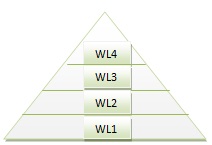 Exhibit 4: Triangular Organization Hierarchical Structure
Exhibit 4: Triangular Organization Hierarchical Structure
The Level 1 to Higher-Level employee ratio was too high to be satisfactory for the kind of in-depth expertise that the Unilever Research Centre demands. This number could be significantly reduced if the Centre were to restructure itself, along the lines of several pharmaceutical companies, and use a Honeycomb-like Structure as illustrated in Exhibit 5.
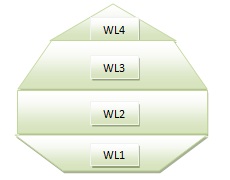 Exhibit 5: Honeycomb-like Organization Hierarchical Structure
Exhibit 5: Honeycomb-like Organization Hierarchical Structure
The larger Expert to Level 1 ratio was achieved through lateral recruitment from amongst foreign and domestic applicants in order to increase the diversity and stimulate innovation at the Centre. Further, the remuneration and incentive structure needed to be aligned to reward performance and scholarship in work rather than educational qualifications.
Conclusion
Hindustan Unilever Limited, a market leader in the Fast Moving Consumer Goods (FMCG) sector in India experienced significant organizational changes as a result of transformation of Unilever Ltd from a multi-domestic structure to a global matrix structure. These changes were reflected in a number of human resource policy and structural changes in the Hindustan Unilever Research centre based in Bangalore. With an increased global orientation, the centre was expected to play a major role as the part of Unilever R&D department. This strategy shift required developing world class research competencies which meant more emphasis on domain expertise without sacrificing product responsiveness as well as cross functional expertise. The matrix structure was thus expected to overcome this challenge and foster more interaction and knowledge transfer.
However, the transition was marred by challenges in implementation of flexi-time policies as well as retention of talent, especially at the entry level. Organizational changes in the global parent company can produce interesting changes in the subsidiaries, however these sweeping changes need to be localised for more effectiveness.
Keywords
HR Policies, Change management, Global integration, Hindustan Unilever Research Centre
Contributors
Abhoy K Ojha is a Professor in the Organisational Behaviour & Human Resources Management department at Indian Institute of Management Bangalore with a doctorate in Organisational Analysis from University of Alberta, Edmonton, Canada. he is also Chairperson for the Executive Education Programme. He can be reached at aojha@iimb.ernet.in.
Ashwin Iyer is a post-graduate student in Management at Indian Institute of Management Bangalore (PGP 2009-11). He holds a B.E. in Electronics & Instrumentation from Birla Institute of BITS Pilani and can be reached at ashwin.iyer09@iimb.ernet.in.
Caren Rodrigues is a doctoral student in the Organisational Behavior and Human Resources Management area in the Indian Institute of Management Bangalore. She holds a Bachelor’s degree in Mechanical Engineering from BMS College of Engineering Bangalore and can be reached at caren.rodrigues09@iimb.ernet.in.
Lakshminarayan Swaminathan is a post-graduate student in Management at Indian Institute of Management Bangalore (PGP 2009-11). He holds a B.Tech in Chemical Engineering from Anna University Chennai and can be reached at swaminathan.lakshminarayan09@iimb.ernet.in.
Rohith S. is a post-graduate student in Management at Indian Institute of Management Bangalore (PGP 2009-11). He holds a B.Tech in Electronics & Communications Engineering from NITK Surathkal and can be reached at rohith.s09@iimb.ernet.in.
Lakshmi Thulasidas is a post-graduate student in Management at Indian Institute of Management Bangalore (PGP 2009-11). She holds a B.Tech in Applied Electronics & Instrumentation from College of Engineering Trivandrum and can be reached at lakshmi.thulasidas09@iimb.ernet.in.
References
- Financial, 2008, "Unilever reshapes its global research & development", December 2, 2008, http://www.finchannel.com/Main_News/Business/25661_Unilever_reshapes_its_global_research_&_development , Last accessed on: September 8, 2009.
- Unilever Global Company Website, www.unilever.com, Last accessed on: September 8, 2009.
- Hindustan Unilever Website, www.hul.co.in, Last accessed on: September 8, 2009.
- The Financial, 2008, "Unilever reshapes its global research & development", December 2, 2008, http://www.finchannel.com/Main_News/Business/25661_Unilever_reshapes_its_global_research_&_development , Last accessed on: September 8, 2009.
- Singh, Namrata, and Tejaswi, Mini Joseph, 2007, "Companies turn flexible to push productivity", The Times of India, 20 November 2007, http://timesofindia.indiatimes.com/biz/india-business/Cos-turn-flexible-to-push-productivity/articleshow/2554436.cms, Last accessed on: September 8, 2009.
